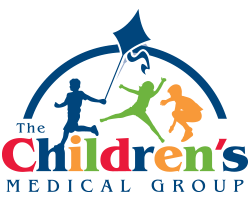Warning: Undefined array key "tCategoryId" in /home/site/wwwroot/www/cmg-media/themes/flatsome-child/medical-conditions-2020.php on line 21
Warning: Undefined array key "tCategoryId" in /home/site/wwwroot/www/cmg-media/themes/flatsome-child/medical-conditions-2020.php on line 21
Warning: Undefined array key "tArticleId" in /home/site/wwwroot/www/cmg-media/themes/flatsome-child/medical-conditions-2020.php on line 21
Warning: Undefined array key "tArticleStyle" in /home/site/wwwroot/www/cmg-media/themes/flatsome-child/medical-conditions-2020.php on line 21
Warning: Undefined array key "tArticleStyle" in /home/site/wwwroot/www/cmg-media/themes/flatsome-child/medical-conditions-2020.php on line 21
Tuberculosis (TB)—Child Care and Schools
View spanish version, share, or print this article.
What is tuberculosis?
A disease caused by an infection with the bacteria
What are the signs or symptoms?
-
Most children and adults initially infected with the bacteria do not have signs or symptoms of disease. That is why tuberculosis (TB) testing is necessary when children are in situations with increased risk of exposure to TB and staff need initial screening when starting to work in early education and child care programs and schools.
-
Tuberculin testing is only indicated for children at risk (eg, family member with TB or positive tuberculin skin test [TST] result, born in or traveled to a high-risk country). Testing should occur 8 to 12 weeks after the last known exposure because it takes some time for the body to develop an immune reaction to TB that the tests can detect.
-
Children who are at risk for TB as described previously and who are younger than 2 years should have the TST to detect TB infection. Children at risk for TB infection who are 2 years and older and at-risk adults can have a TST or a blood test called
interferon-gamma release assay (IGRA). Some children and staff who come from other countries may have received an immunization against TB called the BCG vaccine. For these children and adults, IGRA is a better test. -
All children and adults with a positive TB test result need a chest radiograph (x-ray).
-
If the chest radiograph result is negative, the person is said to have
latent infection. If there are no findings of infection in a child's or staff member's body other than the positive TST result, the child or staff member usually requires only one antibiotic. -
If the chest radiograph result is abnormal, this is called
active disease. The child or adult may require multiple antibiotics.
-
-
If an infected child or adult does develop signs or symptoms of TB, it most often occurs 1 to 6 months after the initial infection and may include
-
Chronic cough
-
Weight loss
-
Fever
-
Growth delay
-
Night sweats
-
Chills
-
What are the incubation and contagious periods?
-
Incubation period: 2 to 10 weeks after the initial infection. The risk of disease after infection is highest in the first 2 years, but the bacteria can be carried in the body for many years before active disease develops. Most infected people never develop active disease. They remain with latent infection.
-
Contagious period: Individuals with latent infection (do not have active disease) are not contagious. Generally, infants and children younger than 12 years with active TB disease are not contagious either. This is because they do not form cavities in their lungs with secretions that contain TB bacterium. When they cough, they do not create enough force to expel large numbers of TB germs into the air. Adults and some adolescents who have active TB spread the bacteria by coughing and contaminating the environment, which is how infants and young children can get infected. Usually, a person with active disease will remain contagious until treated.
How is it spread?
-
Infection in children is nearly always the result of close contact with an adult who has TB.
-
Airborne route: Breathing small particles containing these bacteria floating in the air. These particles first come from a diseased person's respiratory secretions as droplets after a cough or sneeze. The diseased person is usually an adult. These germ-containing particles dry out quickly in the air or fall onto surfaces, and then dry out and attach to dust particles, which become suspended again in the air. These particles travel along air currents and can infect people in another room. People are only contagious when there is active disease in their lungs or throat.
-
It is not spread through clothes, dishes, floors, or furniture.
How do you control it?
-
Assessment of the risk of individuals for TB and their need for TB testing should be part of the routine health assessment of all adults who work in the early education/ child care program or school. Each staff member should be tested once on entering the education field. Further testing is based on risk level. Risk is determined by assessing whether the staff member is in a group or exposed to individuals in groups who have higher rates of TB disease. Specific groups with greater TB disease rates include immigrants, international adoptees, and refugees from or travelers to high-prevalence regions (ie, Asia, Africa, Latin America, and countries of the former Soviet Union); homeless people; and residents of correctional facilities.
-
Tuberculin testing of all contacts of adults with active disease. Tuberculin testing of children and staff members may be necessary if there has been an exposure to TB.
-
Exclusion and treatment of teachers/caregivers with active disease.
What are the roles of the teacher/caregiver and the family?
-
Report the infection to the staff member designated by the child care program or school for decision-making and action related to care of ill children. That person, in turn, alerts possibly exposed family and staff members to watch for symptoms and notifies the health consultant.
-
Immediate notification of local or state health authorities of suspected cases involving children or staff members. If the health professional who makes the diagnosis does not inform the local health department that the infected child or staff member is a participant in a child care program or school, this could delay controlling the spread.
-
Ensure children and staff members take all prescribed medication. Directly observed treatment, performed by clinical or public health staff, may be necessary for active disease and is often advised by the local public health department. For latent TB infection, directly supervised medication taking is not usually used.
-
Staff members with previously positive TB testing results, especially those who were not treated, should be evaluated by their health professionals anytime they develop a disease that involves fever, night sweats, weight loss, or persistent coughing to assess their need for treatment and any risk of contagion related to their TB status.
Exclude from group setting?
Yes, if there is active (infectious) TB disease.
Readmit to group setting?
Yes, when all the following criteria have been met:
-
As soon as effective therapy has been started, adherence to medication is documented, and the person is considered noninfectious
-
When the child or staff member is approved to return and considered noninfectious to others by local health officials
-
When the child is able to participate and staff members determine they can care for the child without compromising their ability to care for the health and safety of the other children in the group
Comment
Some children may develop enlarged lymph nodes, usually in the neck, and be diagnosed with a nontuberculous lymph node infection. These infections are caused by bacteria referred to as
Adapted from
Any websites, brand names, products, or manufacturers are mentioned for informational and identification purposes only and do not imply an endorsement by the American Academy of Pediatrics (AAP). The AAP is not responsible for the content of external resources. Information was current at the time of publication.
The information contained in this publication should not be used as a substitute for the medical care and advice of your pediatrician. There may be variations in treatment that your pediatrician may recommend based on individual facts and circumstances.


